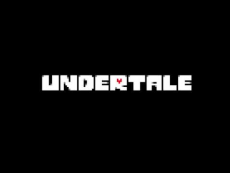
Anyone who is a big fan of videogames, specifically computer games, is likely to recognise the name ‘Steam’. The software, developed by Valve Corporation, provides a database to buy, and platform to play all types of games, from puzzle solving, to RPG, to choose-your-story. One of the most popular independent games on Steam, as well throughout the wider gaming community, is ‘Undertale’. Written and developed by Toby Fox, with additional work from Temmie Chang, the game was released September 15th, and by December, it was estimated that approximately 450,000 people owned the game. ‘Undertale’ reached no.9 on the videogames list of ‘Top 10 Everything of 2015’, as well as gaining first place in ‘Gamer F.A.Q’s’ ‘Best. Game. Ever.’ Userpol. To put that in perspective, ‘Undertale beat both ‘Super Smash Bros.’ (Nintendo), and ‘Legend of Zelda’. So what exactly is it which makes this small, seemingly insignificant game such an instant hit?
The game was brought to life, as many modern independent projects are, through crowd funding. In 2013, Fox’s request for a goal of $5,000 was uploaded to Kickstarter, which resulted in $51,124 being raised by approximately 2, 398 people. Intended to be about 2 hours long, in the 2.7 years of creation, the game quickly grew to triple that length. The quick support for the game, combined with the significant time and care spent on its development is already an indicator of just how good it is.

The most significant feature of the gameplay, that is to say, the thing that sets it apart, is its multiple storylines. Although this general characteristic is something that can be found in many games, ‘Undertale’’s specific plot, and potential realities add significantly to the story. The crux is this; the player will battle monsters throughout the story, but they can choose to either spare them, or kill them. If every single monster is spared, then the player gains no XP, and remains a level 1 through the entire game. If, at any point, the player kills a single monster, or relationships with secondary characters are not fully explored, then there is one ending. If mercy is shown to every single monster, and there are no deaths, then the player is provided with a second revolution. However, there is a third option; if every single monster encountered is killed, then the protagonist becomes influenced by an evil spirit. Without spoiling the ending, the result is this; even through resetting the game, and choosing a different storyline, this spirit is constantly present through later playthroughs, visible to only the protagonist.
These high-stakes moral conundrums contrast nicely with the game’s appearance, and music. With pixelated design, it is reminiscent of the games of the 1980s, backed by 8-bit music that can be found on many Nintendo games. This, and the fact that the protagonist is a child, cause the game to seem comforting, and infantile- though the complex ethics quickly remove this assumption. ‘Undertale’ is certainly an enjoyable game, as well as an interesting study of the videogames genre. Rated 12+, and available for £6.99 on Steam, it is worth investigating.
Images: https://i.ytimg.com/vi/YrUzLwGuD5I/hqdefault.jpg
http://vignette3.wikia.nocookie.net/undertale/images/f/ff/Determination.png/revision/latest?cb=20150928110542

0 Comment:
Be the first one to comment on this article.